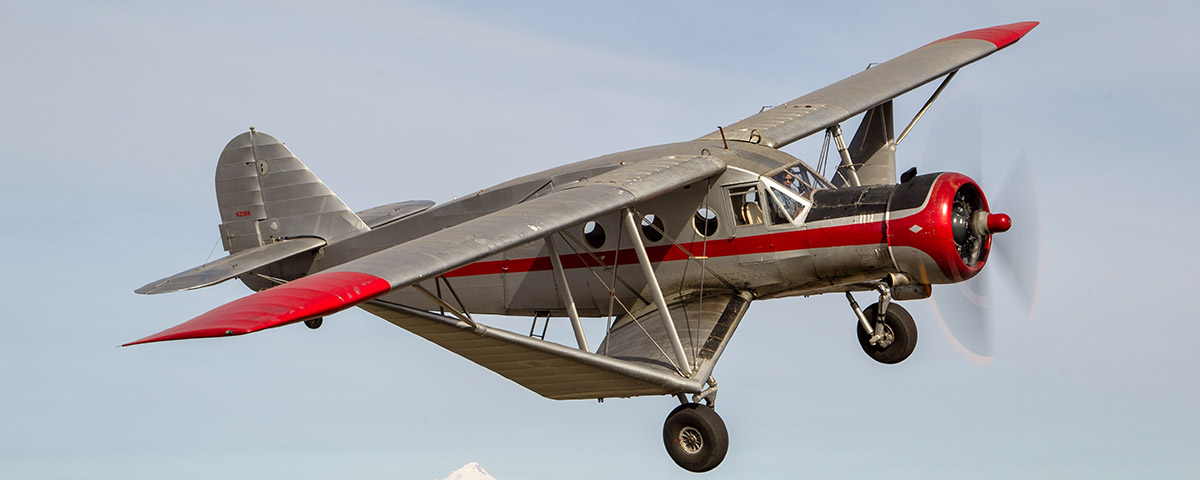Italian immigrant Giuseppe Bellanca pioneered the cabin monoplane design, leading to a long line of record-breaking aircraft.
On May 19, 1912, at Mineola Field, Long Island, gawkers and aviators alike watched with amusement as a diminutive young Italian assembled his parasol flying machine.
Before their astonished eyes, he then proceeded to teach himself to fly, progressing through a series of short, tentative hops until, as the hops got longer and he ran out of landing ground ahead, he edged into his first turn and landed safely. On this slender foundation, the little Italian went on set up his own flying school. Giuseppe Mario Bellanca had just taken the first steps toward becoming an American aviation legend.
Born in Sciacca, Sicily, on March 19, 1886, Bellanca showed a precocious interest in the theory of flight, experimenting with homemade kites, observing seagulls and even watching the effect of air currents on discarded pottery fragments. After graduating with a degree in mathematics from the Milan Technical Institute in 1908, he joined forces with engineers Enea Bossi and Paolo Invernizzi to design a pusher airplane similar to the Wright Flyer. On December 8, 1909, with Bossi at the controls, it made one of the first flights by an Italian-designed and built machine.
Bellanca’s second design, with Invernizzi, was a tractor-type plane built as a possible contender for the Daily Mail’s £1,000 prize for the first airplane flight across the English Channel. Through lack of an affordable engine, it never flew.
In 1911, encouraged by his Brooklyn-based brother Carlo, Bellanca emigrated to the United States with the rest of his family. Later that year, in the rear of his brother’s grocery store, he began constructing the parasol monoplane in which he made his first cautious flight at Mineola Field. From 1912 to 1916, he operated the Bellanca School of Flying, instructing, among others, future New York City mayor Fiorello La Guardia. In return, La Guardia taught Bellanca to drive an automobile.
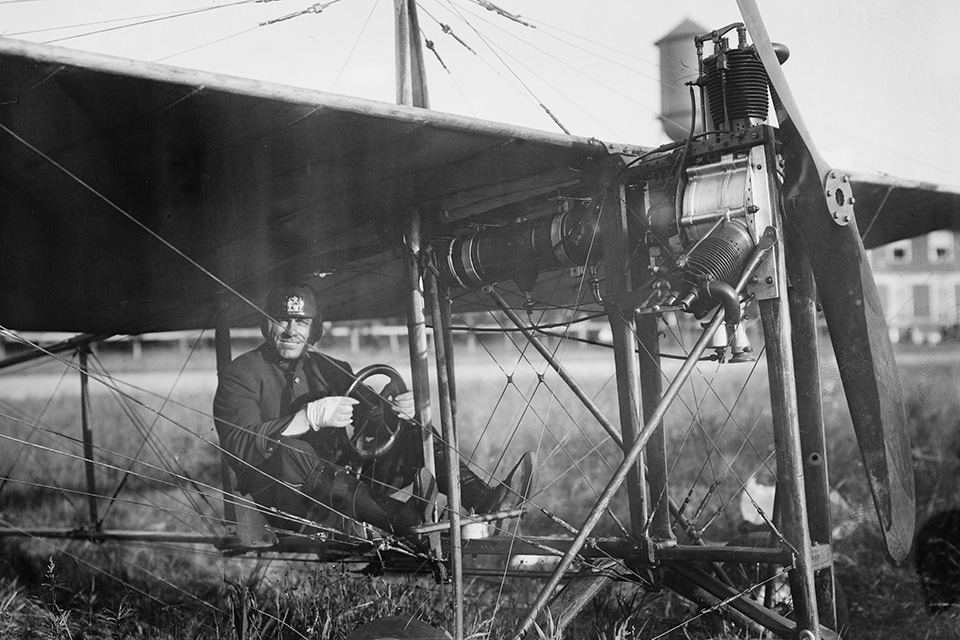
In 1916 the Maryland Pressed Steel Company recruited Bellanca to design a mass-produced training airplane. The result, completed in September 1916, was the CD, a neat single-seat biplane powered by a 30-hp Anzani engine. Effectively a compromise between the World War I types and the configuration that would come to dominate aircraft design in the following decade, the CD used wing-warping instead of ailerons for lateral control.
Bellanca’s next design, the CE, first flew in 1919 and featured ailerons, a tandem cockpit arrangement and enhanced performance. Only two were completed, however, before the end of WWI saw the Maryland Pressed Steel Company forced into receivership. Clarence Chamberlin, a former U.S. Air Service instructor who was destined to be a close associate and friend of Bellanca’s, bought the first CE. Chamberlin, who would become one of the most renowned aviators of his era, was hugely impressed by the graceful CE and used it with great success in barnstorming, enthusing, “[M]y little Bellanca plane did a lot more things than the other barnstorming planes which were war surplus stock and quite clumsy by comparison.” Of the designer himself, he wrote, “A tremendous respect for his ability began to grow in my mind the moment I first took to the air in the machine he had built. It was an opinion I never had occasion to change.” Many others would soon come to share that view.
Meanwhile, Bellanca had started work on a radical new airplane design featuring an enclosed cabin, the CF monoplane. After a false start with a company in Omaha, Neb., that soon went bankrupt, he joined with a local motorcycle dealer, Victor H. Roos, to form the Roos-Bellanca Aircraft Company. Among the company’s employees was Dorothy Brown, whom Bellanca courted with an engagement ring purchased from the sale of two surplus aero engines. Hard taskmaster Roos allowed them just one afternoon off for their honeymoon, on November 18, 1922.
Radical though the streamlined CF may have been, it still had an open cockpit, offset slightly to the left behind the passenger cabin, while the humped back of its airfoil-shaped fuselage severely restricted the pilot’s forward visibility. Powered by a 95-hp Anzani, the CF had made its first flight on June 10, 1922, in the hands of airmail pilot Harry G. Smith, who wrote: “The ease with which the plane handled is extraordinary. In fact it is the most correctly and easiest handled plane I ever flew.” Unfortunately, despite the CF’s innovative design and many successes at aero meets and the National Air Races, its $5,000 price tag was too expensive at a time when a war surplus Curtiss JN-4 “Jenny” could be had for $250.
In March 1925, Bellanca joined the Wright Aeronautical Corporation of Paterson, N.J., on the recommendation of Clarence Chamberlin, who suggested that he design a machine to win the Orteig Prize for the first plane to fly nonstop between New York and Paris. At that time Wright Aeronautical was seeking an aircraft to demonstrate its remarkable new 200-hp J-4 Whirlwind engine. The result, completed in the fall of 1925, was the Wright-Bellanca WB-1, an ungainly looking but highly efficient cabin monoplane with a top speed of 132 mph. After the WB-1 was wrecked in a landing accident, Bellanca developed what was to become the iconic WB-2, powered by a 220-hp J-5 Whirlwind and incorporating a tubular-steel fuselage instead of wood.
Later, when Wright quit the airplane business to concentrate on engines, Bellanca entered into an uneasy partnership with millionaire New York scrap dealer Charles Levine, who founded the Columbia Aircraft Corporation after acquiring the WB-2. Meanwhile, first Wright and then Levine turned down offers from Charles Lindbergh to buy the WB-2 for his solo transatlantic attempt. By this time Levine almost certainly had his eye on the $25,000 Orteig Prize himself. Lindbergh later wrote admiringly of the WB-2: “In a Bellanca filled with fuel tanks I could fly on all night, like the moon. With the engine throttled down it could stay aloft for days.”
To test the WB-2 Columbia’s endurance after it had been fitted with a cabin tank, Levine sent Chamberlin and Bert Acosta up from Roosevelt Field on April 12, 1927. The pair set a new world endurance record of 51 hours and 11 minutes over 4,100 miles while circling Long Island. Crucially for Bellanca and Levine, that was 500 miles greater than the distance to Paris.
Levine then became involved in litigation over the choice of pilots for the flight, and the resultant delays allowed Lindbergh time to scoop the Orteig Prize over May 20-21. However, after the Brooklyn Chamber of Commerce promised $15,000 for the first flight between New York and Berlin, over June 4-6 Chamberlin piloted Columbia to Eisleben, Germany, with Levine as his passenger and nominal copilot. They covered 3,911 miles in 42 hours and 45 minutes—a new world straight-line distance record. In recognition of that achievement, Bellanca’s smiling face appeared on the cover of the July 4, 1927, edition of Time magazine, with the accompanying text declaring that he “is regarded by European experts as the leader in modern design.”
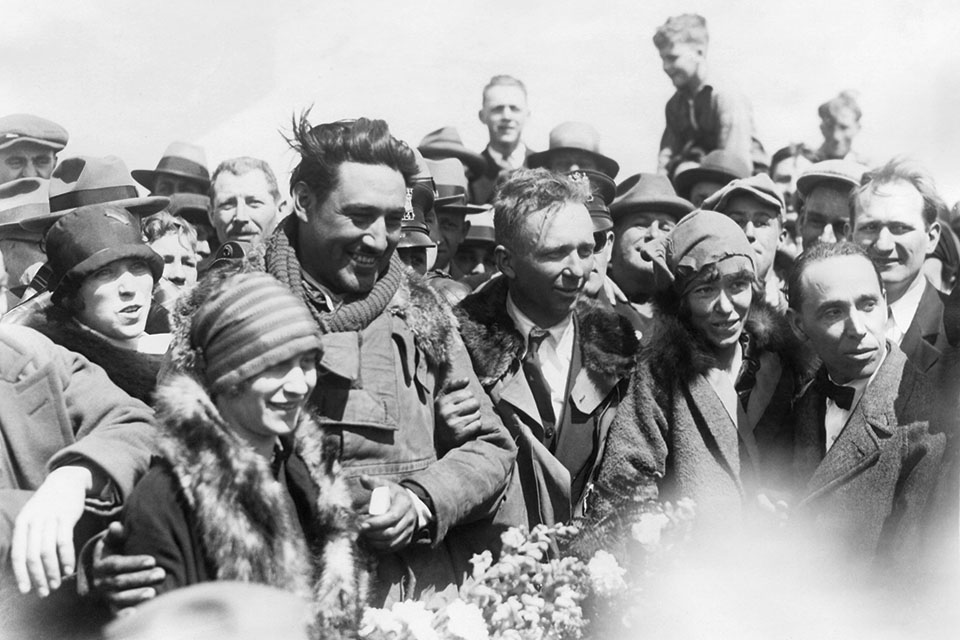
Soon after, the amiable, trusting Bellanca ended his association with the scheming Levine, his diametric opposite in character. Branching out on his own, the Italian formed the Bellanca Aircraft Corporation (BAC), initially manufacturing the WB-2 derivative CH-200 Pacemaker six-seat cabin monoplane, on Staten Island, N.Y., before relocating to New Castle, Del., with encouragement and support from the influential Du Pont family. The chosen site was large enough for a substantial airfield, with a seaplane ramp nearby on the Delamere River. There, according to the New York Times, “Mr. Bellanca, freed from the worries and the details of production, will be able to devote himself to his beloved figures and drawings.” Which, to judge from the inspired designs that flowed from his drawing board over the next decade, he did with enthusiasm, even if the Du Pont connection soon evaporated and the company had to be refinanced, leaving Bellanca in control of an enterprise that would ultimately produce an estimated 3,000 airplanes.
Through Bellanca’s relentless drive to improve the performance of his basic airframe, with its characteristic “flying struts,” the highly versatile CH-200 Pacemaker soon morphed into the more powerful CH-300, with a 300-hp Wright J-6, and ultimately into the Senior Pacemaker. All were widely employed as bush planes in Alaska and Canada. Adhering to the same design themes, the BAC also produced the CH-400 Skyrocket, outwardly similar to the Pacemaker but with a more sporting image. The Skyrocket had no door, so pilot and passengers had to enter and exit through the cockpit window. As the 1930s progressed and Bellanca strove for perfection, the Skyrocket was followed by the De Luxe Skyrocket, the Senior Skyrocket and even the De Luxe Senior Skyrocket. Also manufactured at this time was the experimental Bellanca J, another CH-300 derivative featuring improved performance.
The achievements of Bellanca’s cabin monoplanes in the distance and endurance fields earned them an unsurpassed reputation for reliability. Among the most significant was Lewis Yancey and Roger Williams’ 3,400-mile, 30½-hour flight over July 8-9, 1929, between Old Orchard, Me., and Santander, Spain, in the Bellanca J Pathfinder. Then, on October 8-10, 1930, the redoubtable WB-2 Columbia (renamed Maple Leaf), flown by Canadian J. Erroll Boyd and American Harry Connor, became the first airplane to cross the North Atlantic twice, in a flight between Newfoundland and the Scilly Isles.
From June 24 to 25, 1931, Danes Holger Hoiriis and Otto Hillig made a 32-hour transatlantic crossing in the Bellanca J Liberty between Harbour Grace, Newfoundland, and Krefeld, Germany, though their intended destination was Copenhagen. Over July 28-30, the Bellanca J-300 Cape Cod completed an epic 5,011-mile flight from New York to Istanbul, flown by John Boardman and Russell Polando. Also departing on July 28, the Bellanca J Long Range Special Miss Veedol, piloted by socialite Hugh Herndon and barnstormer Russell Pangborn, left New York on a round-the-world flight attempt. After various setbacks along the way, not least its crew being arrested for alleged espionage in Japan, Miss Veedol became the first airplane to fly nonstop across the Pacific, covering the 4,458 miles between Samishiro Beach, Japan, and Wanatchee, Wash., in 41 hours.
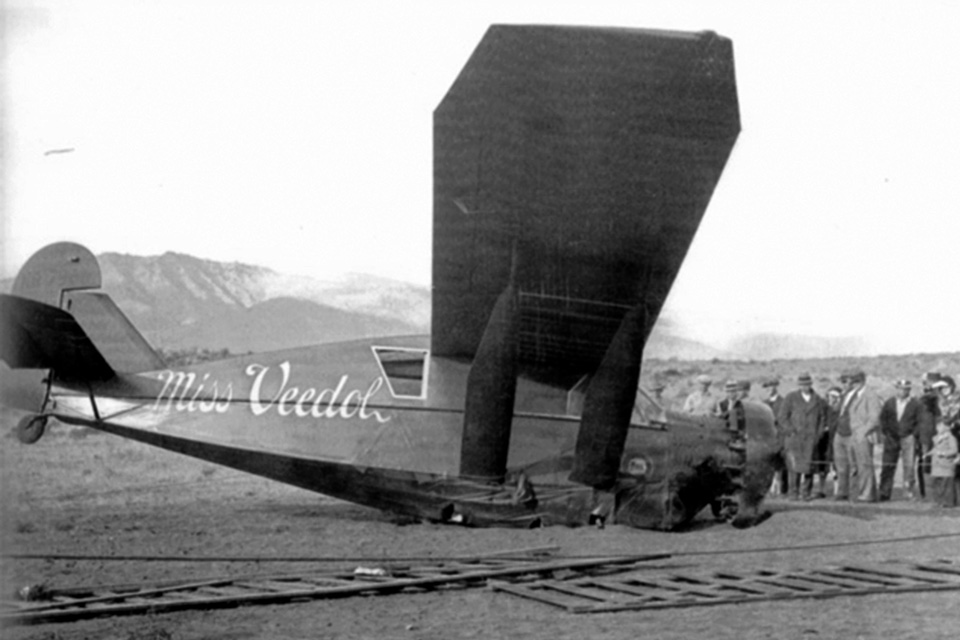
Inevitably, there were also a number of disasters involving Bellanca crews intent on covering long distances. Over August 2-9, 1931, flying a Bellanca Pacemaker on a transatlantic flight attempt by stages, Parker Cramer and Oliver Paquette became the first airmen to cross the great Greenland icecap, only to be lost at sea during the final leg of their flight to Copenhagen. On September 3, 1933, the renowned Italian aviator General Francesco de Pinedo perished when his fuel-laden Bellanca J-3-500 Santa Lucia crashed on takeoff from Floyd Bennett Field, N.Y. Pinedo had intended to fly 6,000 miles to Baghdad to break the world nonstop distance record.
Always seeking new ways of traveling more efficiently through the air, Bellanca also produced a series of innovative sesquiplane designs—biplanes having one wing with less than half the area of the other. The first of these, in 1928, was the large single-engine Model K Roma, which had triangular lifting struts extending from the lower fuselage to points under the wings. Built for a flight to Rome that never took place and later renamed Enna Jettick for a flight to Norway, it was lost off Newfoundland in 1932.
The Model K was followed in 1929 by the Model TES (Tandem Experimental Sesquiplane) Blue Streak, an unusual long-range push-pull airplane powered by back-to-back 425-hp Pratt & Whitney engines. Built for the Chicago Daily News, it suffered a fatal crash on May 26, 1930, due to excessive vibration in the extended propeller shaft.
Next in the line of Bellanca sesquiplanes, with the characteristic lifting-surface wing struts, was the 12- to 14-seat P-100 Airbus of 1930. Although sales of the single-engine transport were limited due to the depressed economic climate, a float-equipped version ran a ferry service between New York’s Wall Street and East River, and 14 Airbuses served with the U.S. Army Air Corps. The final version, the Aircruiser, which itself had five variants, was reportedly more efficient in terms of payload and speed than the multiengine Fokkers and Ford Tri-Motors. But then, in 1934, U.S. federal regulations effectively prohibited single-engine airplanes from operating airline routes, virtually eliminating the American market for the Aircruiser, production of which ceased in 1938. Nonetheless, the Aircruiser—affectionately known as the “Flying W”—soldiered on in Canada, where it flew in support of northern mining operations well into the 1970s.
The penultimate Bellanca sesquiplane, the 77-140 Patrol Bomber, was rejected by the Army Air Corps, though the Colombian air force purchased several, including a floatplane version, 77-320. Last of the Bellanca sesquiplanes, adapted from the Airbus, were the 1937 XSE-1 and XSE-2 carrier-based patrol planes with folding wings and a tailhook, which failed to find favor with the U.S. Navy.
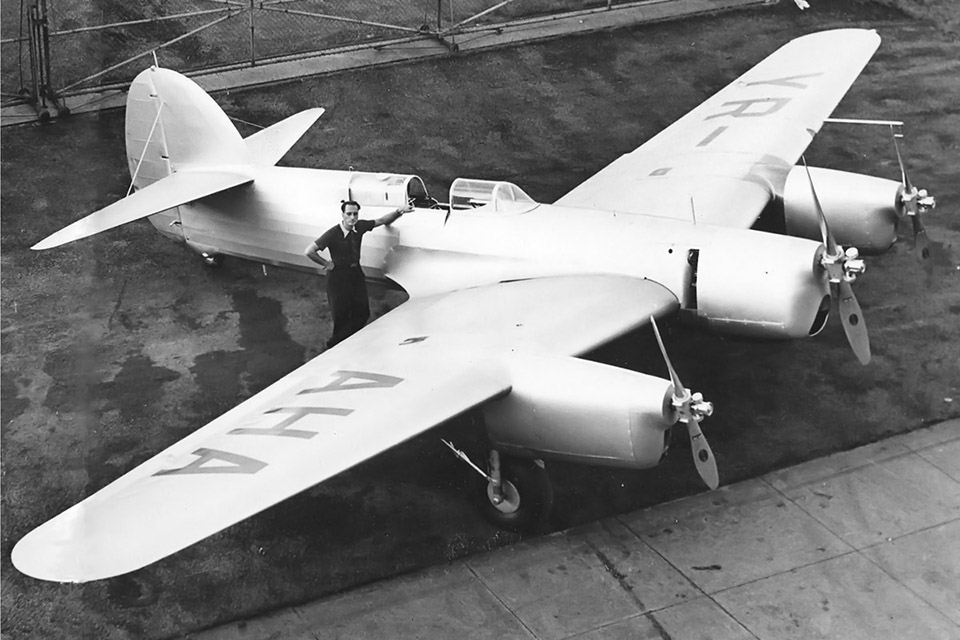
Bellanca also produced a remarkable special order low-wing monoplane, the snub-nosed Model 28-70 Flash racer Irish Swoop, built for Irishman James Fitzmaurice and Briton Eric Bonar to enter in the October 1934 London-to-Melbourne race. Unfortunately, the Flash was disqualified at the last moment because it lacked certified approval for full-load landing tests. Shipped back to the U.S., it subsequently re-emerged with an engine upgrade as the 28-90, The Dorothy, which famed British aviator Jim Mollison flew from Harbour Grace to Croydon, England, on October 30, 1936, in a new transatlantic solo record of 13 hours and 17 minutes. Mollison later piloted The Dorothy from Britain to Cape Town in a new unofficial record of three days and six hours. After that, he sold the airplane to the Spanish Republicans for use in their civil war, its eventual fate being unknown. Military versions of the 28-90, of which more than 40 were built, were exported to China and Mexico.
Another unusual Bellanca, the Model 28-92 trimotor racer, was built for Romanian Alexander Papana to make a goodwill transatlantic flight between the U.S. and his homeland that never occurred. With a top speed of 290 mph and a range of 4,000 miles, it enjoyed some endurance and racing successes in America.
In the late 1930s, the BAC entered the private plane market with the Crusair Junior, a small three-seat, low-wing monoplane. Bellanca suspended all commercial airplane manufacture during WWII, initially acting as a subcontractor for the Fairchild AT-21 gunnery crew trainer and the Boeing AT-15, neither of which entered large-scale production. Later the plant made gun turrets, floats and other equipment for a range of military aircraft. Meanwhile, Bellanca headed up the aviation department of Higgins Industries in New Orleans, working on the design of the imaginative Higgins-Bellanca HC-57 cargo transport, a flying wing with a twin-boom tail that was never built.
Commercial production resumed in 1945 with the Crusair Senior, which led in 1949 to the Cruisemaster, more than 90 of which were built before the Korean War intervened in 1950. Yet again the BAC engaged in subcontracting for defense production, making airplane and missile parts.
Bellanca remained chairman of the BAC until 1954 when, hoping to facilitate long-sought defense contracts, he sold the company to L. Albert and Sons. It was the end of an area. The company was then subsumed into commercial organizations not hitherto engaged in aircraft manufacturing. The controlling syndicate ended up selling the BAC’s buildings and contents to the Piasecki Aircraft Corporation. The sale included all Bellanca’s designs, except the Cruisemaster. Meanwhile, Bellanca and his son August set up the Bellanca Development Company, to carry out research into lightweight aircraft construction materials.
Still in the harness after 42 years in airplane manufacturing, Giuseppe Bellanca died of leukemia on December 26, 1960. Remarkably, the passing of this highly influential aviation pioneer, a shy and modest man who had contributed so much to the advance of aviation in his adopted country (he was naturalized in 1929), received very little media attention.
Yet perhaps his finest, if unwitting, epitaph was written in the May 1933 edition of Aero Digest, which declared, “Among the imports from Italy that have made life more agreeable in America are olives, olive oil, spaghetti, anchovies and Giuseppe Mario Bellanca, pilot, airplane designer and builder and outstanding American citizen.”
Postscript: In 1962 August Bellanca bought back most of the designs from Piasecki and formed Bellanca Aircraft Inc. The Bellanca story then resumed with the Skyrocket II and Aries lightplanes. In 1993 August donated the trendsetting 1920 Bellanca CF to the Smithsonian Institution, where it was restored and later placed on display at the National Air and Space Museum’s Udvar-Hazy Center near Dulles International Airport. J
RAF veteran and frequent contributor Derek O’Connor recommends for further reading: The Bellanca C.F.: The Emergence of the Cabin Monoplane in the United States, by Jay P. Spenser, and Bellanca’s Golden Age, by Alan Abel and Drina Welch Abel.
This feature appeared in the March 2017 issue of Aviation History Magazine. Subscribe today!

